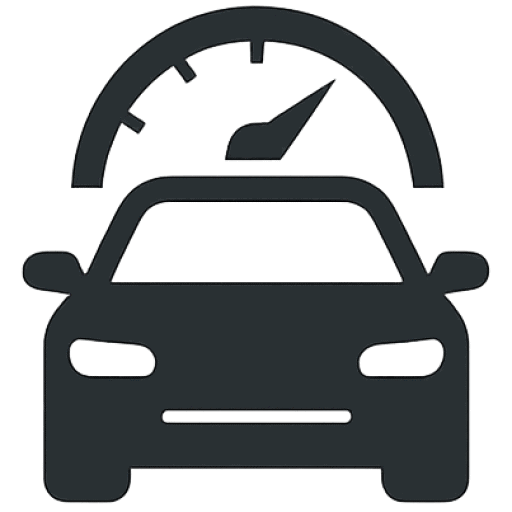If you’ve ever seen your car’s check engine light come on and felt totally lost, you’re not alone. Thankfully, modern technology has made it easier than ever to understand what’s going on under the hood—with nothing more than a smartphone and a small plug-in tool. Enter the world of OBD-II apps.

This guide breaks down what OBD-II apps do, which ones are beginner-friendly, and how to start using them today—even if you have zero mechanical experience.
What Is OBD-II and Why Should You Care?
OBD-II (On-Board Diagnostics, version 2) is a standardized system found in all cars sold in the U.S. since 1996. It monitors engine health, emissions, sensors, and more. When something goes wrong, it stores a code—called a DTC (Diagnostic Trouble Code)—which mechanics use to diagnose problems.
The good news? You don’t need to visit a mechanic just to read those codes anymore.
What You Need to Get Started

To use an OBD-II app, you’ll need:
- An OBD-II Scanner/Adapter: A small device that plugs into your car’s OBD port (usually under the dashboard). Popular ones include:
- OBDLink MX+
- Veepeak OBDCheck BLE+
- BAFX Bluetooth Scanner
- A Smartphone App: Many OBD apps are free or low-cost. We’ll cover the best options below.
Once you pair the scanner with your phone via Bluetooth or Wi-Fi, you can read error codes, clear the check engine light, monitor real-time data, and even track fuel efficiency.
Top OBD-II Apps for Beginners
1. Torque Pro (Android)
Pros:
- Highly customizable dashboards
- Real-time data like RPM, speed, and coolant temp
- Compatible with many vehicles
Cons:
- Slight learning curve
- Android-only
💡 Best for: Tinkerers who want visual gauges and customization
2. Car Scanner ELM OBD2 (iOS & Android)
Pros:
- Simple interface
- Shows sensor data and code definitions
- Pre-built dashboards by car model
Cons:
- Some features locked behind Pro version ($)
💡 Best for: Everyday drivers who want a fast, no-fuss solution
3. OBD Auto Doctor (iOS & Android)
Pros:
- Very user-friendly
- Supports freeze-frame and emissions readiness checks
Cons:
- Limited functionality in free version
💡 Best for: Emissions pre-checks and beginner diagnostics
4. FIXD (iOS & Android)
Pros:
- Designed for non-mechanics
- Translates error codes into plain English
- Offers maintenance reminders
Cons:
- Requires FIXD brand scanner
- Subscription model for full features
💡 Best for: Drivers who want a plug-and-play experience with zero jargon
5. OBDeleven (Android)
Pros:
- Great for Volkswagen, Audi, and other VAG group cars
- Advanced coding and adaptations
Cons:
- Not universal—best only for certain makes
💡 Best for: VW/Audi enthusiasts
Comparison Table
| App | Platforms | Ease of Use | Real-Time Data | Cost | Best For |
|---|---|---|---|---|---|
| Torque Pro | Android | Moderate | ✅ | ~$5 (one-time) | Customization lovers |
| Car Scanner ELM | iOS, Android | ✅ Very Easy | ✅ | Free / $ | Most users |
| OBD Auto Doctor | iOS, Android | ✅ Very Easy | ✅ | Free / $ | Quick diagnostics |
| FIXD | iOS, Android | ✅ Extremely Easy | ✅ | Subscription | Plug-and-play experience |
| OBDeleven | Android | Moderate | ✅ | $ + Credits | VW/Audi-specific tuning |
How to Use an OBD-II App (Step-by-Step)
- Locate your OBD-II port (usually under the steering wheel).
- Plug in your scanner while the car is off.
- Turn on the ignition (but don’t start the engine yet).
- Pair the scanner with your phone via Bluetooth or Wi-Fi.
- Open your OBD app and connect to the scanner.
- Scan for codes. The app will read active trouble codes and often explain what they mean.
- Clear codes (if appropriate) or use the app to track sensor data in real time.
What Can You Diagnose with an OBD-II App?
- Check engine light causes
- Misfires and emissions issues
- Fuel system problems
- Temperature and RPM irregularities
- Battery voltage status
Some apps even allow you to export logs for mechanics or tune vehicle settings (with caution!).
You Might Also Be Interested In:
- How to Tell If Your Car Needs an Alignment
- Signs You Need Fresh Transmission Fluid in a Honda CR-V
- Top Car Maintenance Tips for Summer
Final Thoughts
OBD-II apps turn your phone into a powerful diagnostic tool. They help you understand, monitor, and even fix small issues before they become big problems—without spending hundreds at a repair shop just to “run a scan.”
For most beginners, apps like Car Scanner or FIXD are the perfect starting point. If you’re a little more hands-on, Torque Pro offers customization and a deeper look into your car’s vitals.
By combining one of these apps with a reliable Bluetooth adapter, you’ll stay ahead of car issues and make smarter maintenance decisions—all from your driveway.
Let’s Talk Cars
Have a question? A suggestion? Just want to say hi?
You’re in the right place.
Use the form below to reach out to the AutoSpecs Daily team. We're happy to hear from readers, car lovers, first-time buyers, and anyone who's got something to share.
What can you contact us about?
- Feedback on one of our articles
- Ideas for new topics you'd like us to cover
- Questions about cars, gear, or general auto advice
- Media, partnership, or brand inquiries
- Anything else that's on your mind
We check every message that comes through and do our best to respond within 2 to 3 business days.
We don’t list an email address here to avoid spam, but the contact form is the best and fastest way to reach us.
Thanks for stopping by. We're glad you're here.

